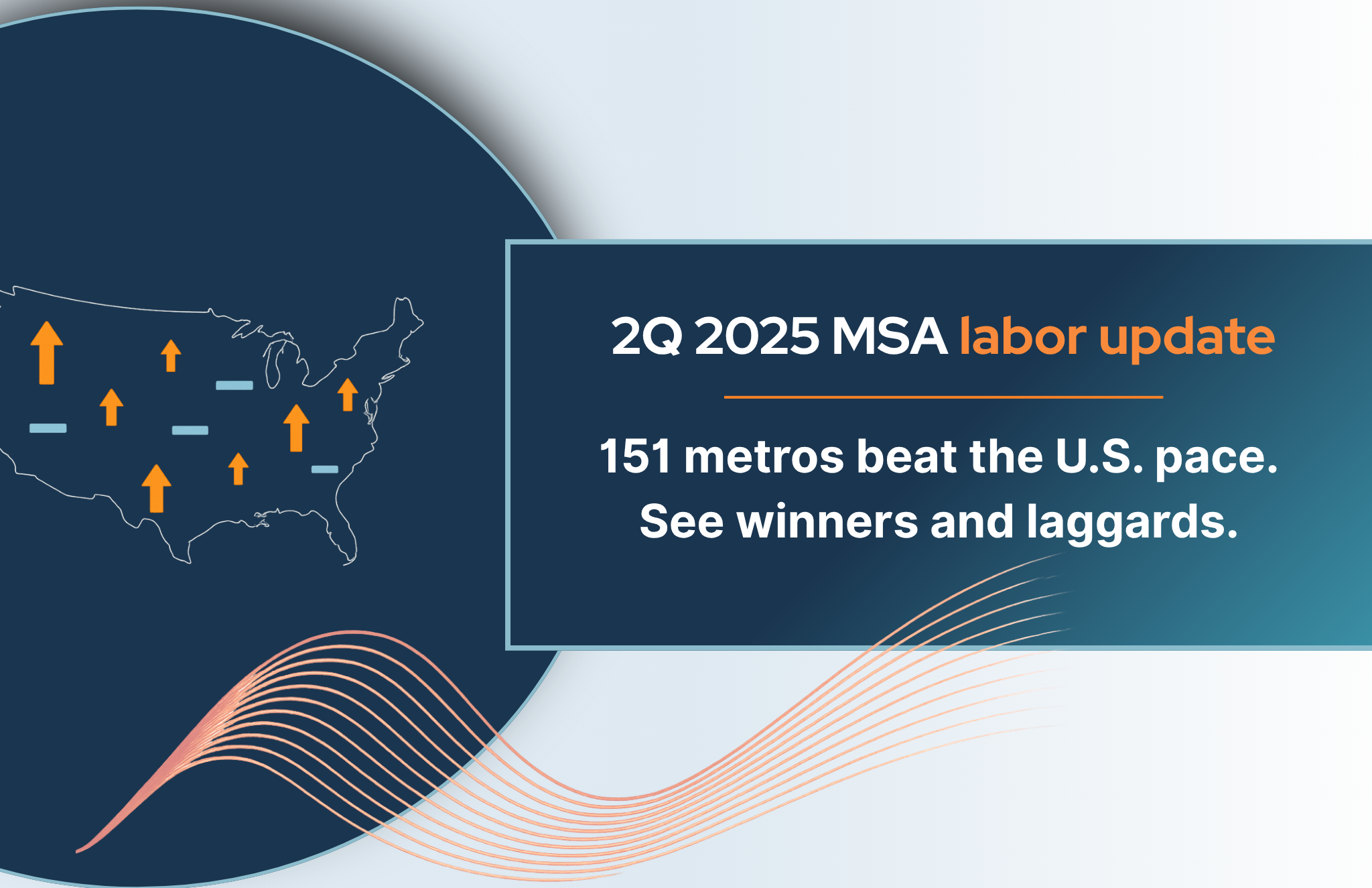JobsEQ Metropolitan Statistical Area (MSA) Data Update, 2Q 2025

By Colin Emberland |
In addition to the state level update, Chmura is on track to update its 2Q quarterly estimates at the local and MSA level as scheduled.
Of the 387 MSAs in the United States, 323 experienced year-over-year employment growth in the second quarter of 2025, 17 were flat, and 47 experienced a contraction in employment. Year-over-year employment growth was higher than the U.S. average of 0.8% in 163 MSAs, and employment in 15 MSAs experienced robust growth of 2% or higher. Employment in the Pinehurst-Southern Pines, NC MSA grew 4.0% year-over-year, the highest of all MSAs, while employment in the Yuma, AZ MSA, which fell 2.8% year-over-year, declined the most.
Average annual wages across the United States rose 5.1%, the largest year-over-year increase since Q3 2022. Wages in 74 MSAs grew more than the average for the United States, and two MSAs, Fayetteville-Springdale-Rogers, AR MSA (13.5%) and San Jose-Sunnyvale-Santa Clara, CA MSA (11.6%), experienced double-digit wage growth. Four MSAs experienced a year-over-year decline in wages. These include the Bloomington, IL MSA, the Midland, MI MSA, the Grand Island, NE MSA, and the Bridgeport-Stamford-Danbury, CT MSA.
Wages in high-employment growth MSAs rose faster than those in low-employment growth MSAs, with the average wage growth in the top 20 MSAs by year-over-year employment at 5.0% and the average of wage growth in the bottom 20 MSAs at 3.6%. This suggest that the loose labor market that has characterized 2025 is not uniform across the entire United States, and wage pressures in higher-growth areas may put upward pressure on inflation.
Subscribe to the Weekly Economic Update
Subscribe to the Weekly Economic Update and get news delivered straight to your inbox.











